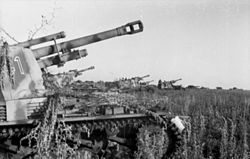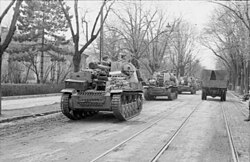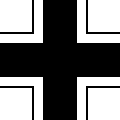| Wespe | |
|---|---|
 Wespe at the Deutsches Panzermuseum in Munster, Germany | |
| Type | Self-propelled artillery |
| Place of origin | Nazi Germany |
| Service history | |
| In service | 1943–1945 |
| Used by | Nazi Germany |
| Wars | World War II |
| Production history | |
| Designer | Alkett |
| Designed | 1942 |
| Manufacturer | Famo-Ursus |
| Produced | 1943 - 1944 |
| No. built | 676 |
| Variants | ammunition carrier |
| Specifications | |
| Mass | 11 tonnes (24,250 lb) |
| Length | 4.81 m (15 ft 9 in) |
| Width | 2.28 m (7 ft 6 in) |
| Height | 2.3 m (7 ft 7 in) |
| Crew | 5 (commander, driver, three gunners) |
| Armor | 5 - 30 mm (.19 - 1.18 in) |
Main armament | 1x 10.5 cm leFH 18/2 L/28 with 40 rounds |
| Engine | 6-cyl petrol Maybach HL62 TR 140 PS (138 hp, 103 kW) |
| Power/weight | 12.7 PS/tonne |
| Suspension | leaf spring |
Operational range | 220 km (137 mi) |
| Maximum speed | 40 km/h (25 mph) |
The Sd.Kfz. 124 Wespe (German for "wasp"), also known as Leichte Feldhaubitze 18/2 auf Fahrgestell Panzerkampfwagen II (Sf.) ("Light field howitzer 18 on Panzer II chassis (self-propelled)"), is a German self-propelled gun developed and used during the Second World War. It was based on a modified Panzer II chassis. [1] [2]



